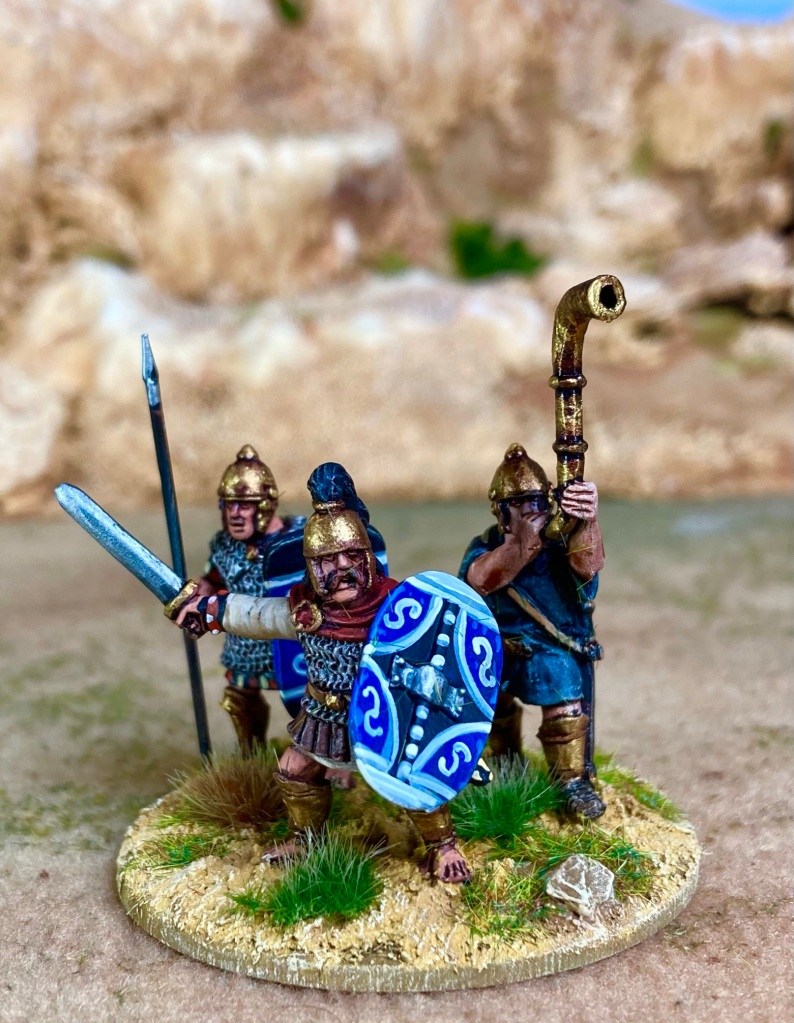
My recent Ancients gaming gave me the push to investigate the back of the painting cupboard, where I knew I had squirrelled away one of those projects of shame – 30-odd half-painted minis from 2017. On the back of my Battle of Tribola game, I’d bought some Crusader Miniatures from Nick at Northstar – some rather combative Celtiberians to add to my Iberian forces. I’d got them all undercoated and started, only to abandon them for a new enthusiasm for the Second World War. Weird!
Left: Celtiberian command, all by Crusader Miniatures. The spearman on the left just reminds me of Roman sentries in Asterix, so I felt he had to get based up protecting his boss!
A quick count-up showed me that I needed a few extra figures to pad out the Crusader models to units of 12 (my standard collecting size at the moment), so I assembled some of the Victrix plastics that I’ve had hanging around (my original army is entirely metal). These new figures got a white Halfords spray undercoat in preparation for a quick paint job using mostly GW Contrast paints (my current go-to for speedy army painting); the older ones had been sprayed with Army Painter Fur Brown, which made a good base for the flesh and bronze which is such a large component of these models.
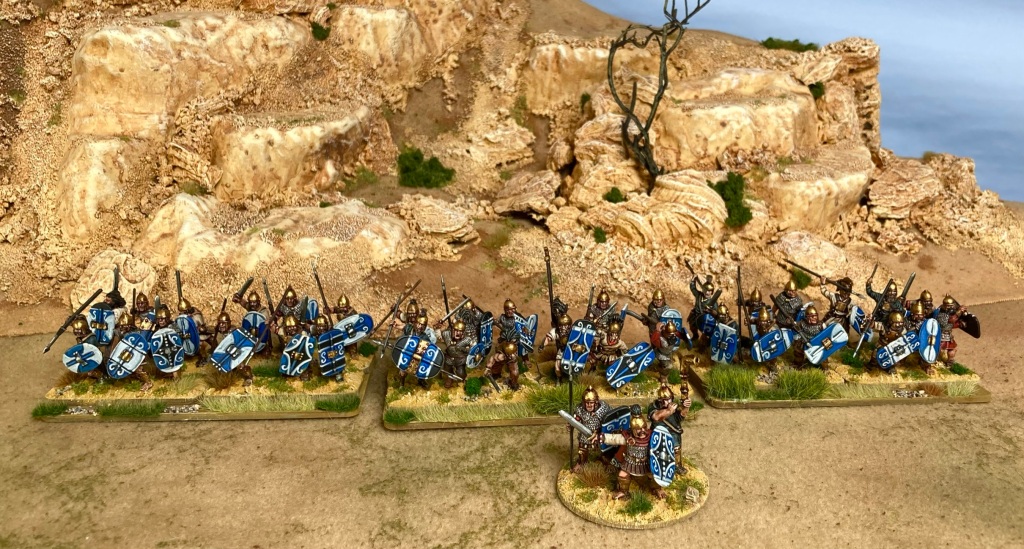
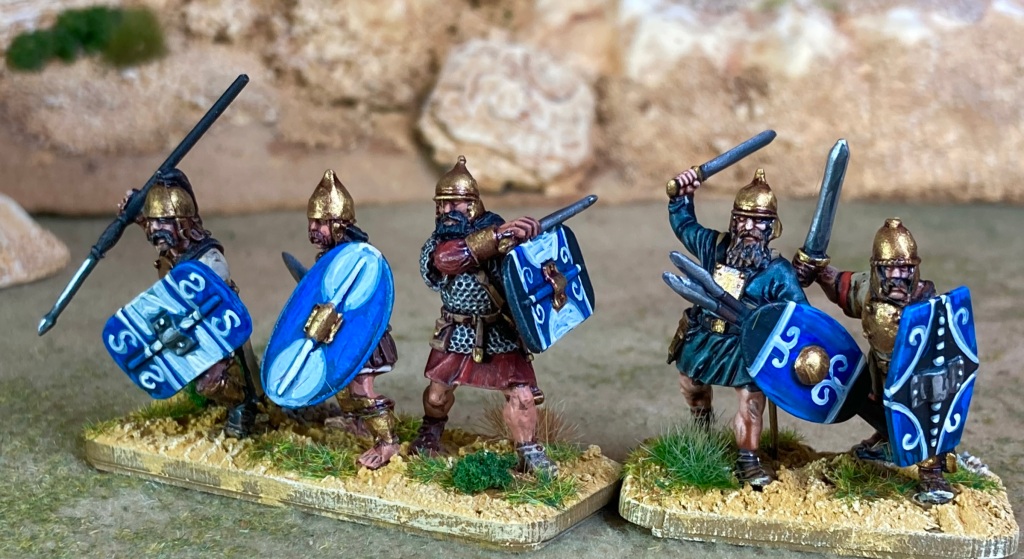
Painting was a pretty straightforward affair, just a bit repetitive for this number of models. The brown undercoated models had a basecoat, a wash of Windsor and Newton Nut Brown ink, and then a single highlight. The new white undercoated plastics were faster, with a single layer of GW Contrast (the Guilliman Flesh paint really speeds up my work on skin areas) and the odd highlight where needed.
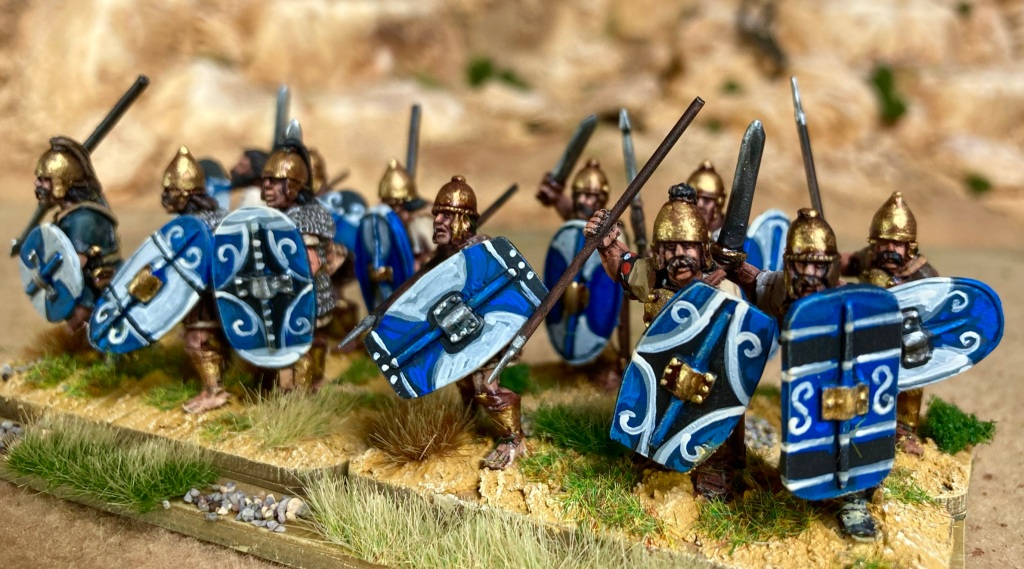
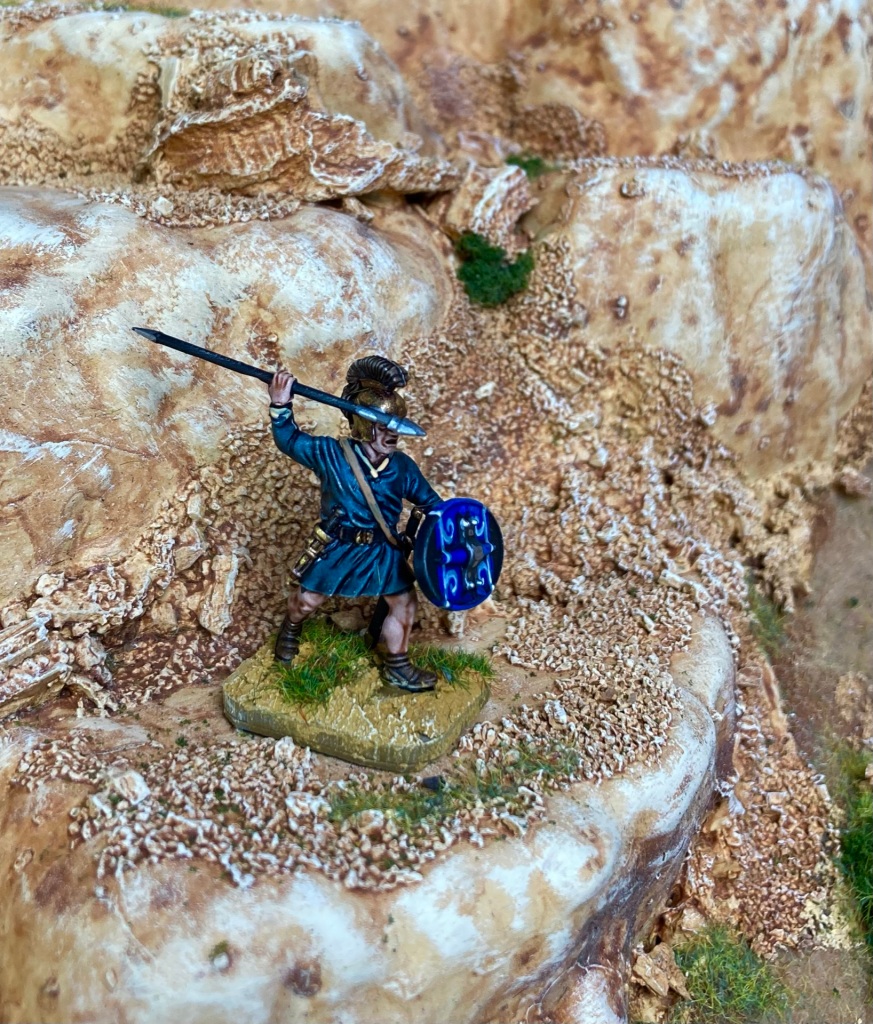
Although I have been known to use transfers on occasion, I really enjoy painting my own shields. The designs are based on various surviving Iberian and Celtic patterns with a bit of artistic licence – what I’m trying to do here is to create easily identifiable units for the gaming table, not an exact authentic representation. I’ve always associated blue with Celts (I think it’s the woad business) so I went with a variety of designs in blue, black and white.
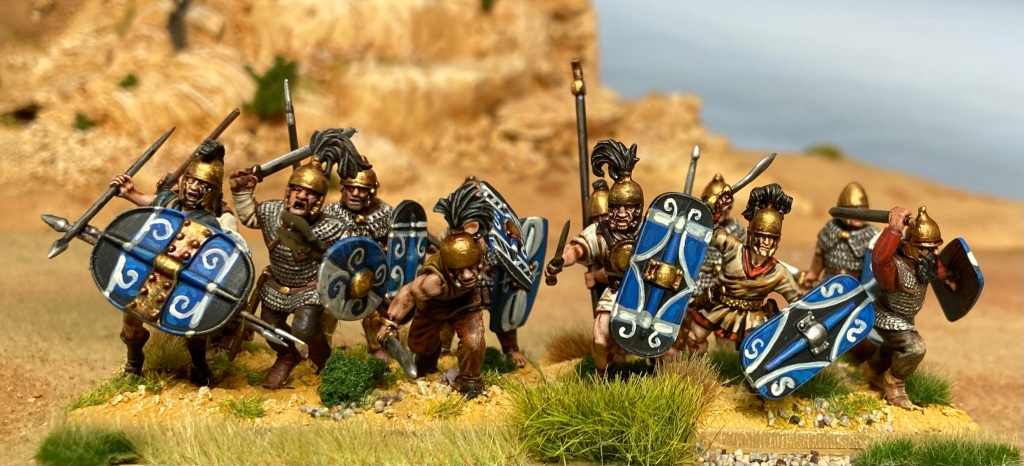
I chop and change how I varnish models – in the past I’ve hand-varnished to avoid dulling the metal areas. This time around, I decided to spray varnish with Testors Matt Dullcote, but I left the wash and metal highlight until after varnishing. This made the metal ‘ping’ and I hope that you can see this in the pics!

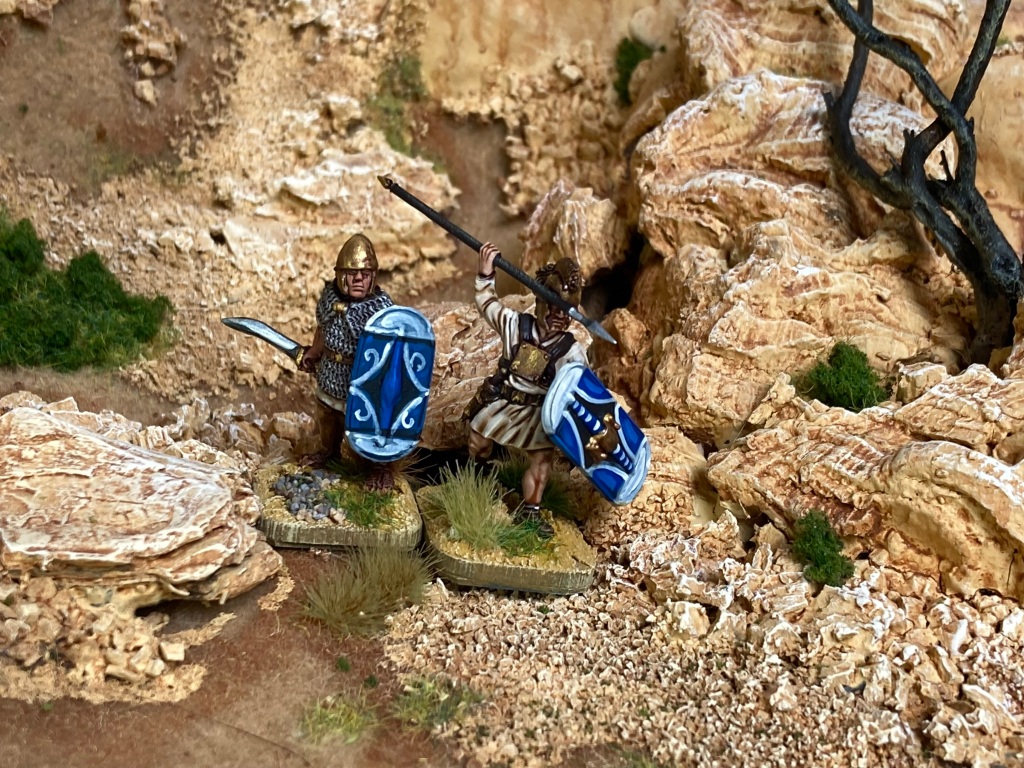
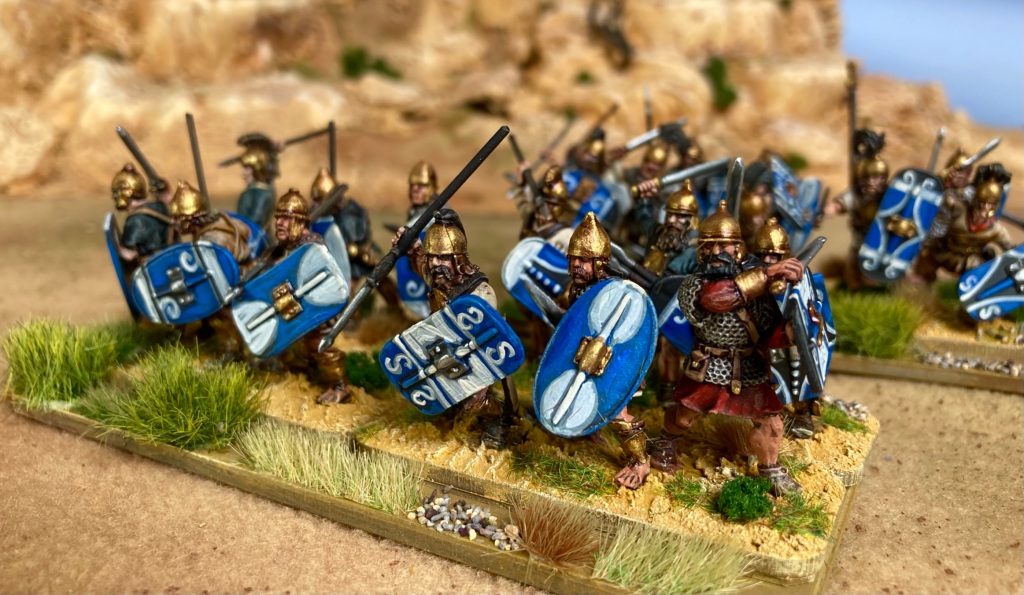
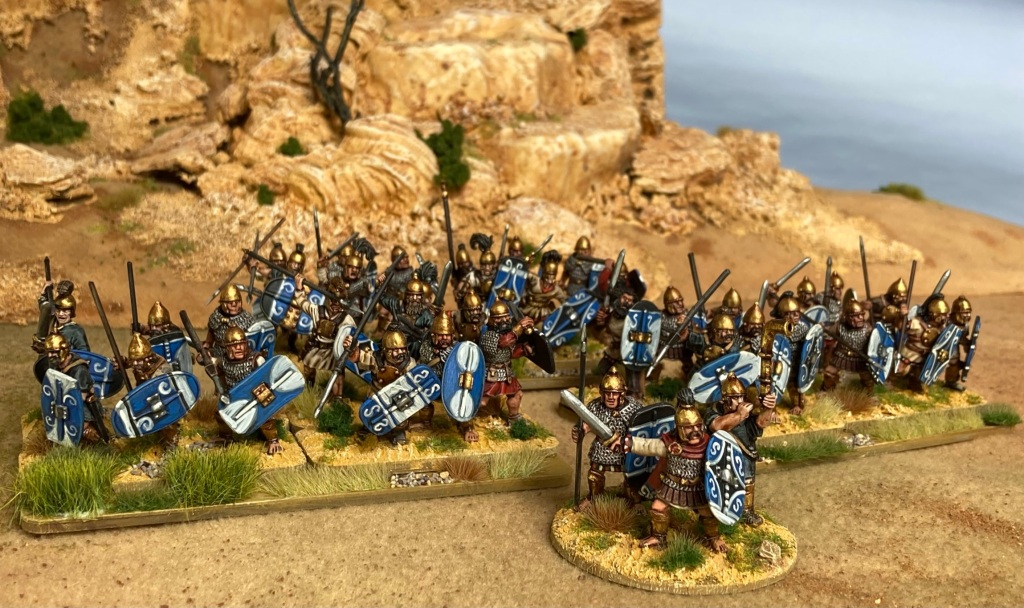
I always get asked about basing so I thought I’d pop in a photo of two of the units on and off their movement trays. While I admire the incredible diorama effects gamers like Simon Miller get on their unit bases, I need some kind of halfway house where I can play both skirmish and big battle games. I’ve therefore adopted a standard where I have a mix of individual and group bases (in this case, ones, twos and threes). The bases are 2mm round-cornered MDF from the incredible company that is Warbases – I stick a layer of 0.5mm self-adhesive magnetic sheet onto the bottom of this. To get the unit trays, I’ve again used a 2mm piece of MDF (120 x 60mm in this case). These have a layer of self-adhesive steel paper on the top, trimmed to size and then painted to match the bases; finally, another piece of magnetic sheet goes on the bottom of the tray so that it can stick straight into one of my steel paper-lined Really Useful Boxes. It feels like a lot of investment in magnets, but it speeds up my gaming no end as I can just pull a box off the the shelf and know that the figures are already on their unit trays ready for battle.
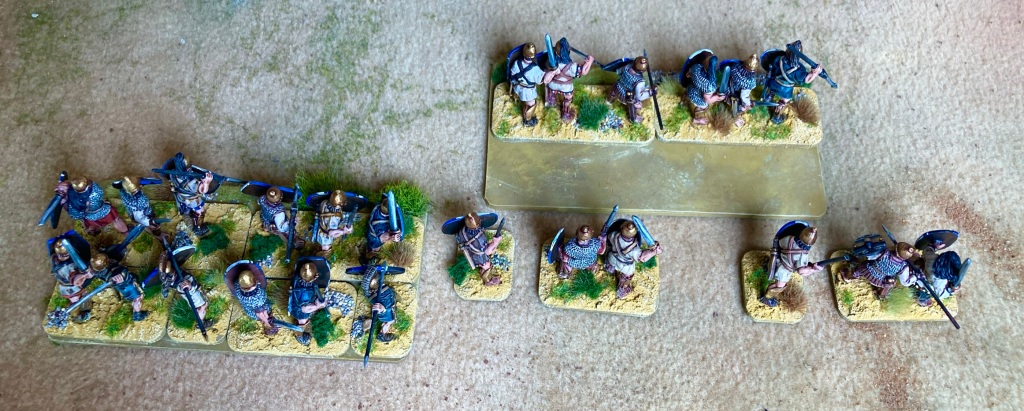
All my magnetic supplies come from the ever-helpful Trevor and Paula Holland of Magnetic Displays/ Coritani, regular friendly faces from the UK show circuit who also run a mean mail order service.
Good work chum. Are you playing in the September WAB event?
Best wishes
Jeremy
LikeLike
Hi Jeremy, sorry for the massively late reply, I only just discovered that people were leaving comments! (blogging newbie error). As you know, I wasn’t at the WAB event, things were a bit hectic last weekend, and to be honest I’ll probably prioritize campaign days over tournaments if I ever get back to doing one-day events. I just read your blog report though and loved it – great pics and writing. Nice to see those new shiny armies (and the old ones).
LikeLike